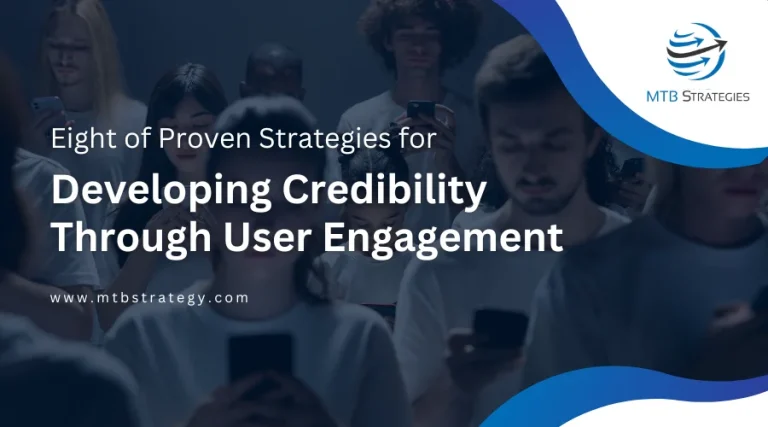In the ever-changing field of digital marketing, companies are always looking for ways to optimize their online presence and enhance user experience. Split testing, often known as A/B testing, has become a potent strategy to achieve these goals. This blog entry will examine the specifics and details of A/B testing strategies, including methods, importance, benefits, examples, and best practices. Reach out now to unleash the complete potential of mobile optimization for impactful results
What is the A/B Testing Strategy?
A/B testing is like a digital experiment in which we compare two versions (A and B) of something online, like a webpage, email, or app, to see which works better. We change just one thing between the two versions and show them to similar groups to see which version they like or use more. It helps us figure out what works best for our audience.
Different Methods of A/B Testing:
- Website A/B Testing is like comparing different versions of a webpage to see which one gets more clicks, keeps people interested, and convinces them to do something, like making a purchase.
- Email A/B Testing means trying out different versions of email messages to see which ones more people open, click on, and engage with overall.
- App A/B Testing is like experimenting with different features or designs in a mobile app to ensure users find it easy to use and enjoy.
- Ad A/B Testing involves checking how different ad elements, like pictures, headlines, or buttons, perform to make ads as effective as possible.
Why is A/B Testing Important?
A/B testing is crucial for data-driven decision-making. It allows businesses to understand user behavior, preferences, and the impact of changes on key performance indicators (KPIs). By identifying the most effective elements, companies can refine their strategies and consistently improve their digital assets.
Benefits of A/B Testing: Examples and Case Studies
- Increased Conversions: By testing webpage variations, Dropbox achieved a 10% increase in sign-ups.
- Optimized Email Campaigns: Airbnb improved its email campaign effectiveness by 11% through A/B testing subject lines and content.
- Enhanced User Experience: Google increased user engagement by 30% through A/B testing different shades of blue for hyperlink text.
How to Perform A/B Testing:
- Define Objectives: Clearly outline the objectives and KPIs that you will become better with A/B testing.
- Create Variations: Develop distinct versions of your digital asset with one variable changed.
- Randomized Testing: Randomly assign visitors or users to the different variants to ensure unbiased results.
- Measure and Analyze: Monitor relevant metrics using analytics tools and statistically analyze the results.
A/B Testing Ideas:
- A/B Testing Ideas – Headlines and Copy:
Crafting compelling headlines and copy is crucial for drawing in your audience and getting your point across. Effectively. A/B testing in this domain involves experimenting with tone, language, length, and messaging style. Consider testing the impact of humor versus seriousness, direct versus indirect language, or short versus long-form copy.
Example: Variant A: “Unlock Your Potential with Our Revolutionary Fitness Program – Join Today!” Variant B: “Transform Your Lifestyle: Embrace a Healthier You – Sign Up Now!”
By systematically comparing these variations, you can identify which messaging resonates better with your audience, leading to improved engagement and conversions.
- A/B Testing Ideas – Call-to-Action (CTA):
The Call-to-Action (CTA) is a critical component that directs users to take a desired action, whether purchasing, subscribing to a newsletter, or downloading a resource. Experimenting with different CTA elements can significantly impact conversion rates—test variations in wording, color, size, placement, and urgency.
Example: Variant A: “Get Started” (Green button placed at the bottom of the document) Type B: “Claim Your Free Trial” (Orange button prominently displayed at the top of the page)
Through A/B testing, you can pinpoint the most practical combination of CTA elements that compel users to take the desired action, thereby boosting conversion rates.
- A/B Testing Ideas – Visual Elements:
Images, videos, and other visual elements are crucial in shaping the user experience and conveying brand messages. A/B testing involves experimenting with different types of visuals, their placements, sizes, and even user-generated content versus professionally curated visuals.
Example: Variant A: A product image featuring the item against a clean background. Variant B: A lifestyle image showcasing the product in use by a happy customer.
By evaluating the impact of these visual variations on user engagement, you can determine the most resonant visual elements that enhance the overall user experience and contribute to increased conversions.
Think of A/B testing like a constant cycle – it means always making things better based on what users say and what’s currently popular. By trying out different headlines, words, buttons, and pictures, businesses can learn what works best and keep getting better online, making sure users have the best experience.
A/B Testing Challenges:
- A/B Testing Challenges – Duration:
One of the critical challenges in A/B testing is the time required to accumulate sufficient data for reliable insights. Rushing the testing process or prematurely drawing conclusions can lead to inaccurate results. The test duration is influenced by website traffic volume, the magnitude of the expected change, and the level of statistical significance desired.
Best Practice: Set realistic expectations for the duration of your A/B tests. Ensure that tests run long enough to capture diverse user behaviors and variations over different periods. Recognize that specific changes may take longer to manifest statistically significant results, especially when dealing with low-traffic websites or subtle alterations.
- A/B Testing Challenges – Sample Size:
Ensuring a representative sample size is a crucial aspect of A/B testing. Small or unrepresentative sample sizes can skew results and compromise the validity of findings. It’s essential to gather data from a diverse and sizable audience to make informed decisions about the performance of different variations.
Best Practice: Conduct a power analysis before launching your A/B test to determine the optimal sample size required to detect meaningful differences. Consider segmenting your audience to ensure each variant is exposed to a representative cross-section of users. Be cautious of tests that conclude too quickly due to inadequate sample sizes.
- A/B Testing Challenges – Interpreting Results:
Understanding and interpreting statistical significance is a common challenge for many businesses engaged in A/B testing. Statistical significance ensures that observed differences between variants are not due to random chance. Misinterpreting results can lead to misguided decisions and ineffective optimizations.
Best Practice: Familiarize yourself with statistical concepts such as confidence intervals and p-values. Utilize statistical significance calculators and tools to assess the validity of your results. Consider consulting with data analysts or statisticians to ensure accurate interpretation. Be wary of making conclusions based on results that may be statistically insignificant.
A/B Testing Best Practices:
Focus on One Variable: Test a single element at a time to pinpoint the exact factor influencing performance.
Segmentation: Analyze results based on audience segments to tailor strategies for specific demographics.
Continuous Testing: A/B testing is ongoing; regularly revisit and optimize based on new insights.
Conclusion:
Think of A/B testing as a helpful guide for businesses online. It helps them make intelligent choices based on data and improves over time. By using A/B testing, companies can make their online stuff work even better, so it’s what people like and achieves the goals they want. In the online world, where every click matters, A/B testing is like a compass that points businesses towards success in the ever-changing online world.






